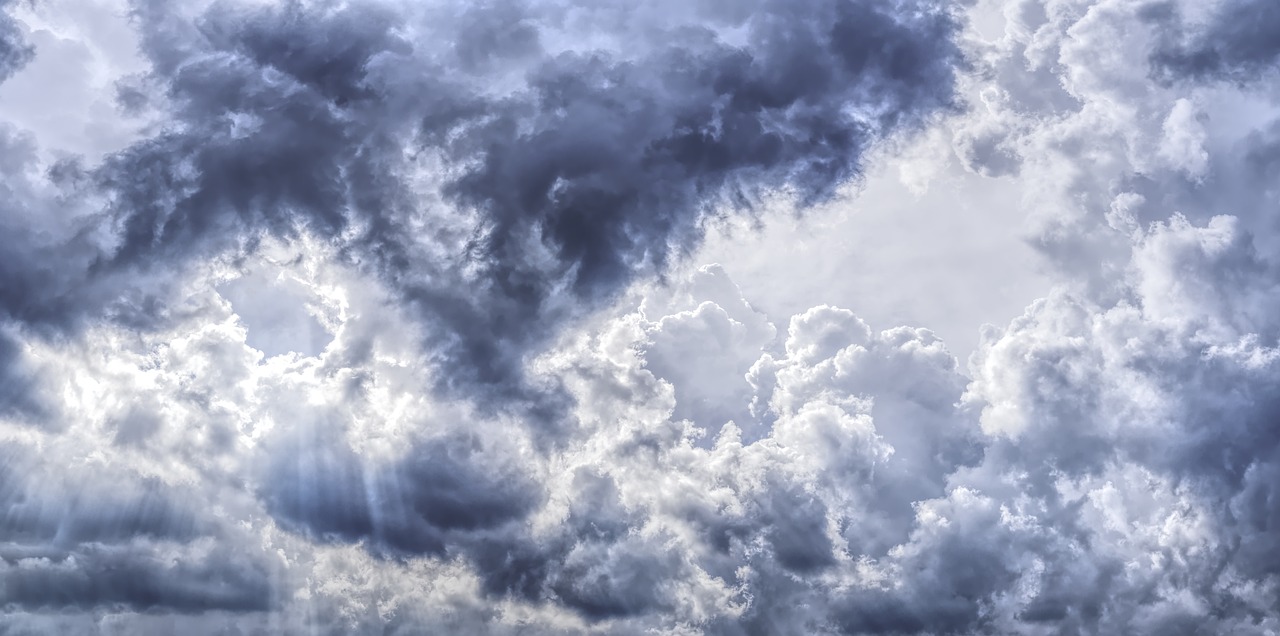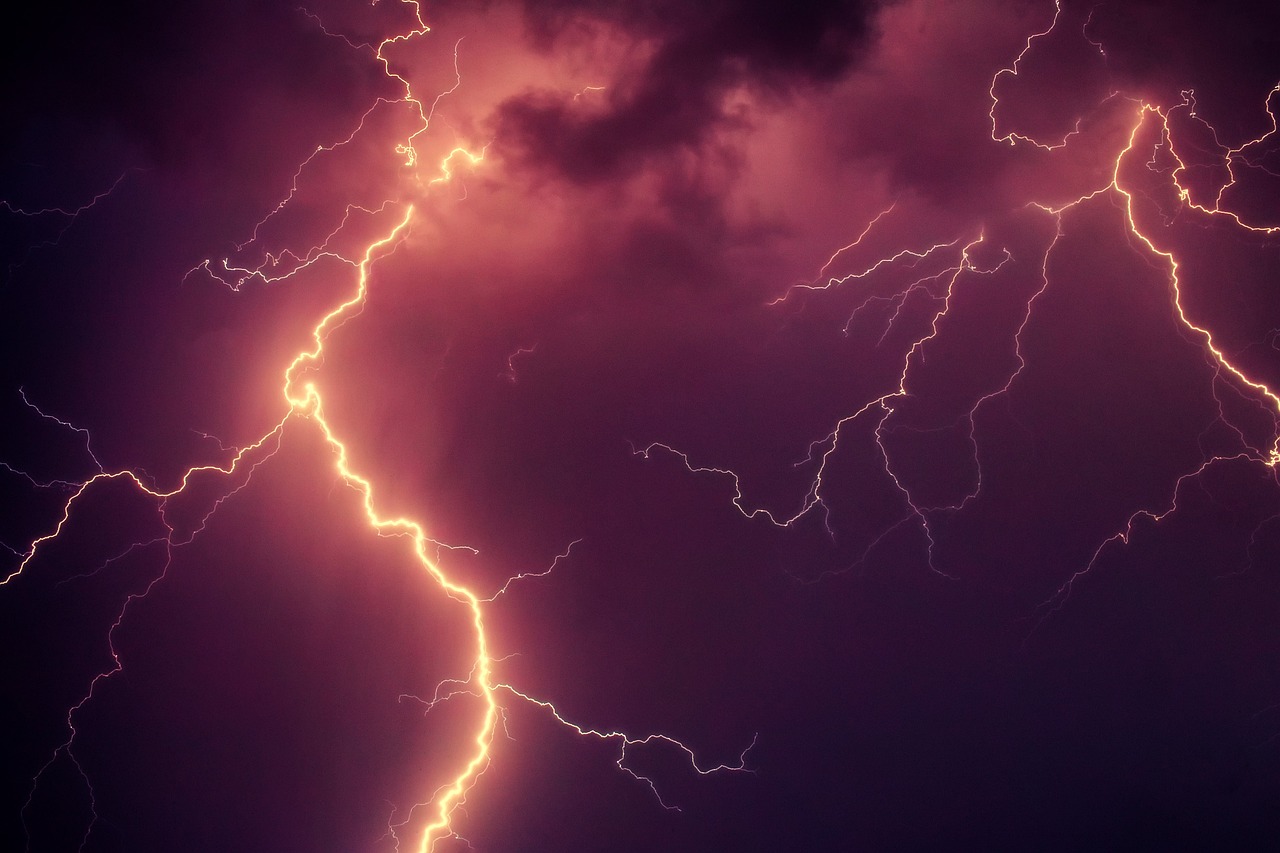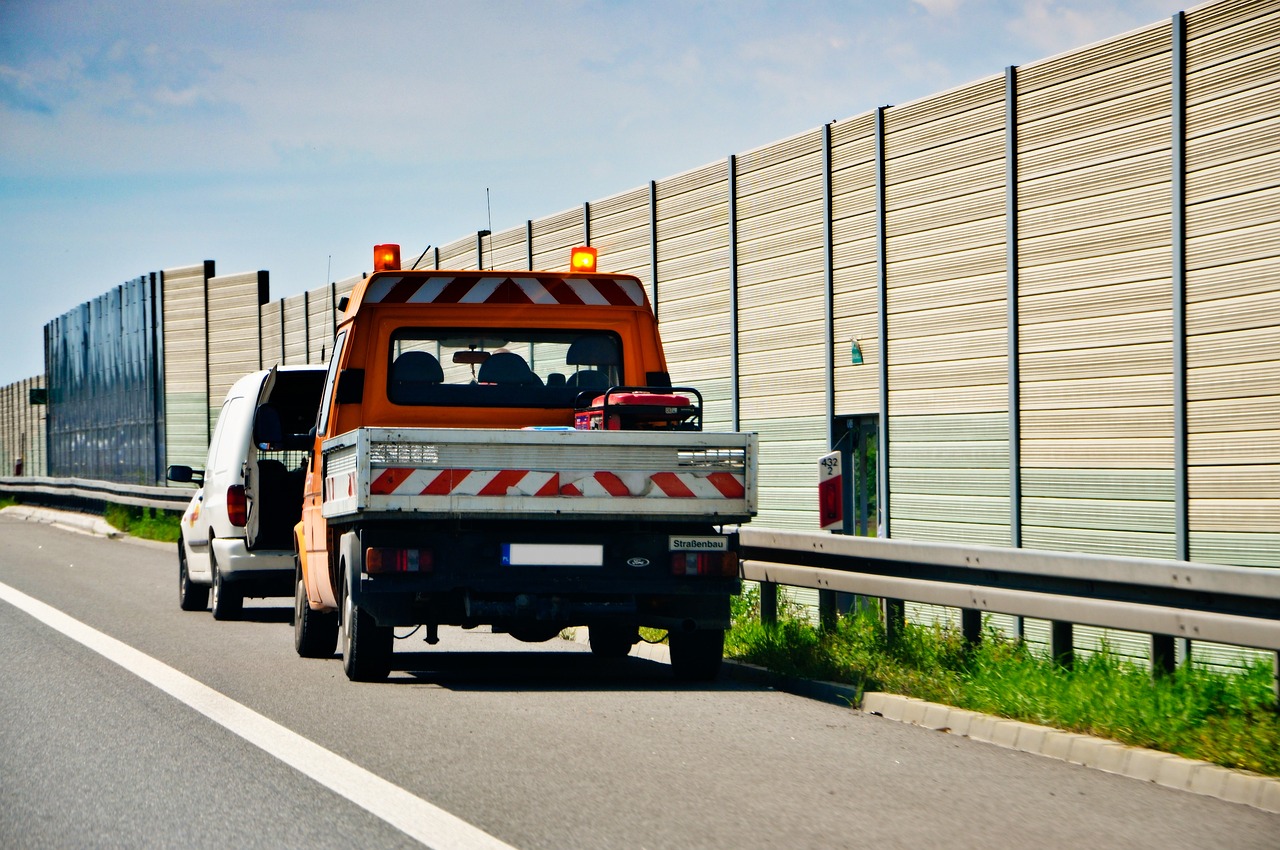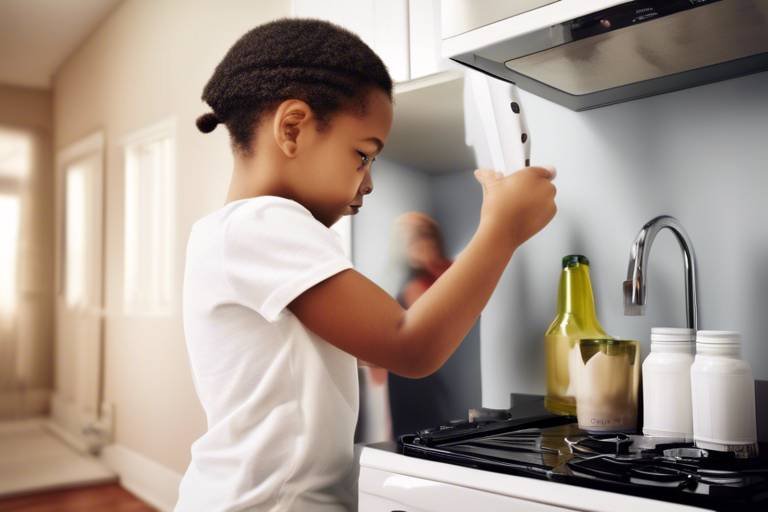Home Safety Measures for Storm Protection
When it comes to storms, being prepared is not just a good idea; it's essential for protecting your home and loved ones. Storms can strike without warning, leaving a trail of destruction in their wake. Whether it’s a hurricane, tornado, or severe thunderstorm, understanding how to safeguard your property can make a significant difference in minimizing damage and ensuring safety. In this article, we’ll delve into practical strategies and precautions homeowners can take to fortify their homes against the unpredictable nature of storms.
Imagine your home as a fortress. Just like a castle needs strong walls to withstand an attack, your home requires specific measures to defend against the forces of nature. It’s not merely about boarding up windows or filling up sandbags; it’s about creating a comprehensive plan that encompasses preparation, protection, and response. So, let’s explore the essential home safety measures that will help you weather the storm.
Recognizing the various types of storms and their potential impacts is crucial. Storms can range from heavy rains and flooding to intense winds and hail, each presenting unique threats to your home and safety. For example, hurricanes can bring about devastating storm surges, while tornadoes can obliterate everything in their path. By understanding the specific dangers associated with each type of storm, homeowners can take tailored precautions that address these risks directly.
Preparation is key to storm safety. It’s all about being proactive rather than reactive. Imagine waiting until the last minute to gather supplies or reinforce your home; that’s a recipe for disaster! Here, we outline steps to fortify your home, including structural reinforcements and essential supplies to have on hand. The goal is to create a safe haven for you and your family during stormy weather.
Windows and doors are vulnerable points during storms. High winds can shatter glass, and flying debris can easily breach these entry points. To prevent this, consider investing in storm-resistant windows or reinforcing existing ones with impact-resistant film. Additionally, securing doors with heavy-duty deadbolts and using door braces can provide extra protection. Every little measure counts when it comes to keeping your home safe.
Storm shutters provide an additional layer of protection. They come in various types, including roll-down, accordion, and plywood shutters, each offering unique benefits for safeguarding windows against storm impacts. Installing these shutters not only helps in preventing glass breakage but also reduces the risk of wind entering your home, which can lead to structural damage. Think of them as your home’s armor, ready to shield you from the storm’s wrath.
Plywood is a cost-effective alternative for storm protection. If you’re on a budget, this option can still provide substantial security. To properly install plywood over windows and doors, measure your openings accurately and cut the plywood sheets accordingly. Use screws or bolts to secure them tightly, ensuring they can withstand strong winds. This method is like putting up a temporary barrier that can protect your home from the elements.
An emergency plan is essential for family safety during storms. Without a clear strategy, chaos can ensue when a storm hits. It’s vital to have a communication plan in place, outlining where to meet and how to contact each other if you become separated. Regularly practicing your emergency plan can help everyone feel more prepared and less anxious when the storm arrives. Remember, a well-thought-out plan is your best defense against panic during a crisis.
Having the right supplies on hand can make a significant difference during a storm. Think of your emergency kit as your lifeline when the power goes out or when you’re cut off from regular supplies. It’s not just about having food and water; it’s about being ready for any situation. Here, we list essential items every household should keep in their emergency kit:
- Non-perishable food items: Canned goods, dried fruits, and energy bars.
- Water: At least one gallon per person per day for three days.
- First aid kit: Include bandages, antiseptics, and any necessary medications.
- Flashlights and batteries: Power outages are common during storms.
Access to food and water is critical during storm emergencies. It’s recommended to store enough food and water for at least three days per person. Consider stocking up on items that require minimal preparation, such as canned soups, pasta, and peanut butter. These foods not only provide energy but also have a long shelf life. Remember, in times of crisis, having a good supply of food and water can ease a lot of stress.
Injuries can occur during storms, making first aid kits essential. It’s wise to include items like adhesive bandages, gauze pads, antiseptic wipes, and pain relievers. Additionally, ensure that you have a sufficient supply of any prescription medications you or your family members may need. Keeping these items readily available can be a lifesaver in emergencies, allowing you to address minor injuries without delay.
Q: What should I do if a storm is approaching?
A: Stay informed by monitoring weather updates, secure your home, and gather emergency supplies. It's best to follow your emergency plan.
Q: How can I reinforce my roof against strong winds?
A: Consider installing roof straps and ensuring that shingles are secured properly. Regular maintenance can also prevent damage.
Q: What types of food are best for emergency supplies?
A: Non-perishable items like canned goods, dried fruits, nuts, and energy bars are ideal as they require no refrigeration and have a long shelf life.

Understanding Storm Risks
When it comes to storm safety, understanding the risks is your first line of defense. Storms can come in various forms, each posing unique threats to your home and family. From hurricanes and tornadoes to severe thunderstorms and blizzards, the potential for damage is significant. For instance, hurricanes can bring not only strong winds but also torrential rain and flooding, while tornadoes can cause devastating destruction in mere minutes. It's essential to recognize these threats and prepare accordingly.
Let's break down some of the most common storm types and their associated risks:
- Hurricanes: These massive storms can produce winds exceeding 150 mph, along with storm surges that can inundate coastal areas. Flooding is often a major concern, leading to extensive property damage and power outages.
- Tornadoes: Known for their unpredictable nature, tornadoes can destroy buildings and uproot trees in seconds. Their path of destruction can be narrow but intensely powerful, making them particularly dangerous.
- Severe Thunderstorms: These storms can bring heavy rain, lightning, hail, and strong winds. Flash flooding is a common risk, especially in areas with poor drainage.
- Blizzards: While they may not seem as immediately dangerous as other storms, blizzards can trap families indoors and lead to hypothermia or frostbite if proper precautions aren't taken.
Understanding these risks isn't just about knowing what can happen; it's about being proactive. For example, if you live in a hurricane-prone area, you should be aware of evacuation routes and have a plan in place. Similarly, if tornadoes are common in your region, knowing how to identify a tornado watch versus a warning can save lives.
Moreover, it's crucial to consider the impact of storms not only on your home but also on your community. Local infrastructure, such as power lines and emergency services, can be severely affected during major storms. This can lead to delays in response times and increased vulnerability for residents. Therefore, being informed about your area's storm history and preparedness resources can significantly enhance your safety.
In summary, understanding storm risks is about more than just awareness; it's about taking action. By recognizing the types of storms that can affect your area and preparing accordingly, you can safeguard your home and loved ones against the unpredictable forces of nature. Remember, knowledge is power, and when it comes to storm safety, being prepared can make all the difference.

Preparing Your Home
When it comes to storm safety, preparation is not just a good idea; it's a necessity! Think of your home as a fortress, and just like any castle under siege, you need to take the right steps to fortify your defenses. This means assessing your home’s vulnerabilities and making the necessary adjustments to ensure that both your family and belongings are protected. Start by inspecting your roof, windows, and doors. Are there any loose shingles? Cracks in the frames? These are weak points that can easily succumb to the fury of a storm.
One of the most critical aspects of storm preparation is ensuring that your home is structurally sound. This can involve everything from reinforcing your roof to securing your garage doors. For instance, did you know that high winds can easily lift garage doors if they aren't properly secured? By adding vertical supports or braces, you can significantly reduce this risk. Similarly, consider inspecting your gutters and downspouts. Clogged gutters can lead to water buildup, which can cause flooding and water damage. A quick clean-up can save you a lot of headaches later!
Now, let’s talk about the supplies you should have on hand. Imagine being caught in a storm and realizing you’re out of batteries for your flashlight or that your first aid kit is missing essential items. To avoid such scenarios, create a comprehensive list of emergency supplies. Here’s a quick overview of what you might consider:
- Non-perishable food items (canned goods, energy bars)
- Water (one gallon per person per day for at least three days)
- Flashlights and extra batteries
- First aid kit
- Whistle to signal for help
- Multi-tool or Swiss Army knife
Having these items ready can make a world of difference when the storm hits. And don’t forget about your pets! Make sure you have enough food, water, and any medications they might need. After all, they’re part of the family too!
Furthermore, consider creating a secure storage area for outdoor items that could become dangerous projectiles in high winds. This includes patio furniture, garden tools, and decorations. Bringing these items inside or securing them can prevent them from causing damage to your home or others during a storm.
Lastly, it’s essential to have a clear communication strategy in place. Ensure that everyone in your household knows what to do and where to go in case of an emergency. This might include identifying a safe room within your home or a nearby shelter. By preparing your home and family for storms, you create a safety net that can significantly reduce the risks associated with severe weather. Remember, the more prepared you are, the more peace of mind you’ll have when the storm clouds gather!

Securing Windows and Doors
When it comes to storm protection, is one of the most critical steps homeowners can take. Think of your home as a fortress; if the walls are strong but the gates are weak, intruders—or in this case, storms—can easily breach your defenses. Windows and doors are often the most vulnerable points in a home during severe weather, so reinforcing them not only enhances your home’s structural integrity but also provides peace of mind for you and your family.
First off, let’s talk about the importance of window protection. High winds can shatter glass, sending dangerous shards flying throughout your home. To prevent this, consider installing storm shutters, which act as a barrier against flying debris and high winds. Not only do they protect windows, but they also help maintain your home’s temperature by providing an extra layer of insulation. If you’re looking for a more budget-friendly option, plywood can serve as a temporary solution. Just remember, it’s essential to cut the plywood to fit your windows snugly and secure it with screws to ensure it stays in place during the storm.
Now, let’s not forget about doors. They can be just as vulnerable as windows, especially if they are not properly reinforced. Installing a deadbolt lock is a great first step, as it provides additional security that standard locks might lack. Furthermore, using door jammers or braces can help prevent doors from being blown open by strong winds. Imagine your door as a shield; the stronger it is, the better it can protect you from the storm’s wrath.
For those who want to take their preparations a step further, here’s a quick overview of the different methods to secure your windows and doors:
| Method | Description |
|---|---|
| Storm Shutters | Permanent or removable barriers that protect windows from wind and debris. |
| Plywood | Cost-effective, temporary solution that can be cut and secured over windows. |
| Deadbolt Locks | Additional locking mechanism that increases door security. |
| Door Braces | Devices that reinforce doors against strong winds. |
In conclusion, securing your windows and doors is an essential part of storm preparation. By taking these precautions, you’re not just protecting your property; you’re also ensuring the safety of your loved ones. So, as the storm clouds gather, remember that a little effort now can go a long way in safeguarding your home from nature’s fury.
- How can I tell if my windows are storm-ready? Check for any cracks or weaknesses in the frame and ensure that all locks are functional.
- Is plywood a good option for storm protection? Yes, plywood is a cost-effective solution, but it must be properly secured to be effective.
- What type of storm shutters should I choose? It depends on your budget and needs; there are various options, including accordion, roll-down, and colonial shutters.

Installing Storm Shutters
When it comes to protecting your home from the wrath of Mother Nature, storm shutters stand out as one of the most effective barriers you can install. Think of them as the armor for your windows, ready to shield your home from the fierce winds and flying debris that accompany storms. But how do you go about installing these vital protective measures? Well, it’s not just about slapping some boards over your windows; it involves careful planning and execution.
First off, you need to choose the right type of storm shutters for your home. There are several options available, each with its own set of benefits:
- Accordion Shutters: These are easy to deploy and provide excellent protection. They fold neatly to the side when not in use, making them a space-saving option.
- Roll-Down Shutters: Perfect for those who want convenience, roll-down shutters can be operated with a simple crank or motor, allowing for quick deployment when a storm is imminent.
- Bahama Shutters: These are not only functional but can also add a tropical aesthetic to your home. They hinge at the top and can be easily closed when needed.
- Colonial Shutters: These offer a classic look and can be secured over windows in a matter of minutes.
Once you’ve chosen the type that suits your needs and style, the next step is installation. If you’re a DIY enthusiast, you might find this process rewarding. However, if you’re not confident in your skills, hiring a professional is always a wise choice. Here’s a general overview of the installation process:
- Measure Your Windows: Accurate measurements are crucial. Ensure that you measure the width and height of each window to get the correct size for your shutters.
- Prepare the Area: Clear the area around your windows, removing any obstacles that could hinder the installation process.
- Install Mounting Brackets: Depending on the type of shutters you’ve chosen, you’ll need to install the appropriate mounting brackets. Make sure they are securely fastened to withstand high winds.
- Attach the Shutters: Once the brackets are in place, carefully attach the shutters. Follow the manufacturer’s instructions to ensure they are installed correctly.
- Test the Mechanism: If you’ve opted for roll-down or accordion shutters, test the mechanism to ensure everything operates smoothly.
Don’t forget to regularly maintain your storm shutters. Just like any other part of your home, they need attention to function properly when the storm hits. Check for any signs of wear and tear, and make sure they’re clean and free of obstructions. A well-maintained shutter can be the difference between a minor inconvenience and major damage during a storm.
In summary, installing storm shutters is a proactive step towards safeguarding your home. By choosing the right type and ensuring proper installation, you can provide your windows with the protection they need against the elements. Remember, it’s not just about protecting your property; it’s about ensuring the safety of your family. So, take the time to invest in this crucial aspect of home safety!
1. How do I know which type of storm shutter is best for my home?
Consider your budget, aesthetic preferences, and how frequently you experience storms. Each type of shutter has its own advantages, so think about what works best for your needs.
2. Can I install storm shutters myself?
Yes, if you are handy and follow the manufacturer’s instructions, you can install them yourself. However, if you’re unsure, hiring a professional is recommended.
3. How often should I maintain my storm shutters?
It’s best to inspect your shutters at least once a year, and after any major storm, to ensure they are in good working condition.

Using Plywood for Protection
When it comes to storm protection, using plywood can be a game-changer for homeowners looking to shield their properties without breaking the bank. Plywood offers a cost-effective solution that can be easily implemented, allowing you to fortify your windows and doors against the relentless forces of nature. But how do you go about it? Let's dive into the details!
First off, you’ll want to choose the right type of plywood. Typically, a thickness of at least 5/8 inch is recommended for optimal protection. This thickness strikes a balance between strength and weight, making it easier to handle while still providing adequate resistance against wind and debris. You can find plywood at most home improvement stores, often labeled as “storm-grade” or “hurricane-grade” for added peace of mind.
Before you start, it’s crucial to measure your windows and doors accurately. This ensures that the plywood fits snugly, minimizing gaps that could allow wind and rain to penetrate. Once you have your pieces cut to size, consider the following methods for installation:
- Pre-drilling Holes: Before attaching the plywood, pre-drilling holes can make the installation process smoother. This prevents the wood from splitting and allows for a more secure fit.
- Using Lag Bolts: For a sturdy hold, use lag bolts to fasten the plywood to the framing around your windows and doors. This method is particularly effective against high winds.
- Temporary Bracing: If you’re concerned about the plywood coming loose, consider adding temporary braces. These can be made from 2x4s and will help keep the plywood securely in place.
Another tip is to keep your plywood stored in a dry place throughout the year. This ensures that it remains in good condition and ready for quick deployment when a storm threatens. Remember, the goal is to be prepared ahead of time, so when the weather forecast calls for a storm, you’re not scrambling to find materials.
Lastly, don’t forget about the aesthetics! While the primary goal is protection, you can still keep your home looking decent. Consider painting the plywood in a color that matches your home’s exterior. This way, when you install it, it won’t be an eyesore but rather a functional part of your home’s defense strategy.
In conclusion, using plywood for storm protection is not just about slapping some boards over your windows and doors. It’s about creating a solid defense that can withstand the elements while ensuring your home remains a safe haven for you and your family. So, gather your materials, follow these steps, and you'll be well on your way to storm-proofing your home!
1. How long can I keep plywood stored for storm protection?
You can store plywood indefinitely as long as it’s kept dry and away from moisture. Just check it regularly for any signs of damage.
2. Can I use screws instead of lag bolts for installation?
Yes, screws can be used, but lag bolts provide a stronger hold, especially in high-wind situations.
3. Is there a specific type of plywood I should use?
Look for “storm-grade” or “hurricane-grade” plywood, which is designed specifically for storm protection.
4. How do I ensure the plywood fits my windows properly?
Measure your windows accurately and cut the plywood to size, ensuring a snug fit to prevent gaps.

Creating an Emergency Plan
This article discusses essential strategies and precautions homeowners can take to safeguard their properties during storms, ensuring both safety and security for families and belongings.
Recognizing the various types of storms and their potential impacts is crucial. This section explores common storm threats and their specific dangers to homes and residents.
Preparation is key to storm safety. Here, we outline steps to fortify your home, including structural reinforcements and essential supplies to have on hand.
Windows and doors are vulnerable points during storms. This subsection discusses effective methods for reinforcing these areas to prevent damage from high winds and debris.
Storm shutters provide an additional layer of protection. We delve into different types of shutters and their benefits for safeguarding windows against storm impacts.
Plywood is a cost-effective alternative for storm protection. This section explains how to properly install plywood over windows and doors for added security.
When the skies darken and the winds begin to howl, having a solid emergency plan can be the difference between chaos and calm. Think of your emergency plan as a lifeline, a roadmap that guides your family safely through the storm. The first step is to gather everyone in your household and discuss what to do when a storm is on the horizon. It's not just about knowing where to go; it's about understanding the why behind each action. For example, do you have a designated safe room? Is there a plan for pets? These details matter.
Communication is key during emergencies. Make sure everyone knows how to reach each other if you get separated. In today’s digital age, consider using a group chat or a family app to keep everyone updated in real-time. It's also a good idea to establish a meeting point outside your home, in case you need to evacuate. This location should be easily identifiable and safe from storm impacts.
Additionally, practice makes perfect! Conduct regular drills to ensure everyone knows their role. Think of it like a fire drill, but tailored for storms. This could include practicing how to secure windows and doors, where to find emergency supplies, or how to contact emergency services. The more familiar everyone is with the plan, the more confident they'll feel when the winds start to pick up.
Lastly, don’t forget to document your plan. Write it down and keep copies in accessible places throughout your home. Consider creating a simple table to summarize your emergency plan, like the one below:
| Emergency Action | Details |
|---|---|
| Safe Room Location | Identify a room in the house that is away from windows and has minimal exposure to wind and debris. |
| Communication Plan | Designate a family member to be the point of contact and ensure everyone has their phone numbers saved. |
| Evacuation Meeting Point | Select a safe location outside your home where everyone will gather if evacuation is necessary. |
Remember, storms can be unpredictable, but with a well-thought-out emergency plan, you can face them with confidence and composure.
Having the right supplies on hand can make a significant difference during a storm. Here, we list essential items every household should keep in their emergency kit.
Access to food and water is critical during storm emergencies. This section provides guidelines on how much to store and types of food that are best suited for emergencies.
Injuries can occur during storms, making first aid kits essential. We discuss the necessary items to include and the importance of keeping medications readily available.
- What should I do if I have to evacuate? Always follow local authorities' evacuation orders and take your emergency kit with you.
- How can I protect my home if I don’t have storm shutters? Use plywood or heavy-duty tarps to cover windows and doors.
- What items should be in my emergency kit? Include water, non-perishable food, a flashlight, batteries, a first aid kit, and any necessary medications.

Stocking Emergency Supplies
When it comes to storm preparedness, one of the most critical aspects is . Imagine being caught in a storm without access to food, water, or medical supplies; it’s a scenario that no one wants to face. To ensure your family’s safety and comfort, it’s essential to have a well-thought-out emergency kit ready to go. This kit should contain items that can sustain you and your loved ones for at least 72 hours, especially during severe weather events when access to stores and services may be limited.
First and foremost, water is the most vital resource. The general guideline is to store at least one gallon of water per person per day for at least three days. This means for a family of four, you should aim to have a minimum of 12 gallons stored. It’s not just about drinking water; you may need it for sanitation and cooking as well. To make things easier, consider using water storage containers that are easy to transport and stack.
Next up is food. Non-perishable food items are your best bet. Think along the lines of canned goods, dried fruits, nuts, and granola bars. These foods are not only easy to store but also provide essential nutrients. When stocking your emergency food supplies, it's smart to include items that require little or no preparation. For example:
- Canned vegetables and beans
- Peanut butter
- Instant oatmeal
- Energy bars
Additionally, don’t forget to account for any special dietary needs or preferences in your family. Having a variety of foods can help keep spirits high during a stressful time.
Now, let’s talk about first aid kits. Injuries can happen unexpectedly, especially during storms when debris might be flying around. A well-stocked first aid kit should include:
- Adhesive bandages
- Antiseptic wipes
- Gauze and tape
- Scissors
- Prescription medications
It’s also wise to have a list of any medications that family members take regularly, along with a few over-the-counter medications for pain relief or allergies. Keeping these items readily available will ensure that you’re prepared for any minor injuries that may occur.
When you’re preparing your emergency kit, don’t forget about communication devices. A battery-powered or hand-crank radio can be invaluable during a storm, especially if the power goes out. It’s also a good idea to have a portable charger for your cell phone, as staying connected can be crucial for receiving updates and reaching out to loved ones.
Lastly, consider including some comfort items in your emergency supplies. These could be books, games, or anything that can help keep morale up during a stressful time. After all, storms can be frightening, especially for children, and having familiar items can provide a sense of security.
In summary, stocking emergency supplies is not just about having enough food and water; it's about creating a safety net for your family. By preparing in advance, you can ensure that you have everything you need to ride out the storm comfortably and safely. Remember, the key is to regularly check and update your supplies to ensure everything is within expiration dates and in good condition.
Q: How often should I check my emergency supplies?
A: It’s a good practice to check your emergency supplies at least twice a year. This way, you can replace any expired items and make sure everything is in working order.
Q: What should I do if I have pets?
A: Don’t forget about your furry friends! Ensure you have enough pet food, water, and any medications they may need. Consider including a leash, carrier, and comfort items as well.
Q: How can I find out about local storm alerts?
A: Stay informed by signing up for local weather alerts through your phone or radio. Many communities also have social media pages that provide real-time updates during storms.

Food and Water Supplies
When it comes to storm preparedness, having adequate is not just a good idea; it's absolutely essential. Imagine being stuck at home during a storm, with the winds howling outside and the power out for days. The last thing you want to worry about is whether you have enough food or clean water. So, let’s break down what you need to consider when stocking your emergency supplies.
First and foremost, you should aim to have at least a three-day supply of food and water for each person in your household. This is crucial because, during severe storms, you might not have access to grocery stores or clean drinking water. A good rule of thumb is to store at least one gallon of water per person per day. For a family of four, that means you should have a minimum of 12 gallons of water ready to go. But don't stop there—if you can, try to plan for a week's worth of supplies. After all, storms can be unpredictable!
When it comes to food, opt for non-perishable items that are easy to prepare. Think about items like canned goods, dried fruits, nuts, and granola bars. These foods not only have a long shelf life but also require minimal preparation, which is a major plus when the power is out. Here’s a quick list of some great options to consider:
- Canned fruits and vegetables
- Canned meats (like tuna or chicken)
- Peanut butter
- Instant oatmeal or cereal
- Rice and pasta
Furthermore, it's wise to include some comfort foods in your stash. Snacks like chips, cookies, or chocolate can provide a morale boost during a stressful situation. And let’s be honest, who doesn't appreciate a little treat when the storm is raging outside?
Now, don't forget about medications and dietary needs. If anyone in your family requires special diets or medications, make sure to stock up on those as well. A good idea is to create a checklist of all necessary items to ensure you don’t miss anything important. You can even use a table to organize your supplies and check them off as you go:
| Item | Quantity | Notes |
|---|---|---|
| Water | 12 gallons | 1 gallon per person per day |
| Canned Goods | Varies | Choose a mix of fruits, vegetables, and proteins |
| Snacks | Varies | Include comfort foods |
| Medications | As needed | Include prescriptions and over-the-counter meds |
Lastly, always remember to check the expiration dates on your supplies regularly. Rotate your stock so that you’re using the oldest items first and replacing them with fresh supplies. This way, you’ll ensure that your food and water are always safe to consume when you need them the most.
In summary, being prepared with adequate food and water supplies can make all the difference during storm emergencies. By taking the time to plan and stock up, you can ensure that your family stays safe, nourished, and comfortable, no matter what Mother Nature throws your way.
Q: How much water should I store for my family?
A: Aim for at least one gallon of water per person per day for a minimum of three days. If possible, store enough for a week.
Q: What types of food are best for storm emergencies?
A: Non-perishable items like canned goods, dried fruits, nuts, and snacks are ideal. Choose foods that require minimal preparation.
Q: How often should I check my emergency supplies?
A: Regularly check your supplies every few months to ensure that nothing is expired and that you have everything you need.

First Aid Kits and Medications
When storms roll in, the last thing you want to worry about is whether you have the necessary supplies to deal with injuries or medical emergencies. A well-stocked first aid kit can be your lifeline during such chaotic times. Think of it as your personal safety net, ready to catch you when the unexpected happens. So, what should you include in your first aid kit? Let's break it down.
Your first aid kit should be more than just a box with a few band-aids. It should contain a variety of items that can address different types of injuries. Here’s a comprehensive list of essentials you should consider:
- Adhesive bandages: For cuts and scrapes.
- Gauze pads and adhesive tape: For larger wounds.
- Antiseptic wipes: To clean wounds and prevent infection.
- Antibiotic ointment: To apply on cuts to help with healing.
- Scissors and tweezers: For cutting tape or removing splinters.
- Instant cold packs: To reduce swelling and pain.
- Pain relievers: Such as ibuprofen or acetaminophen.
- Allergy medications: Including antihistamines for allergic reactions.
- Burn cream: For treating minor burns.
- Thermometer: To check for fever.
In addition to these items, it’s crucial to have any personal medications readily available. If you or any family member takes prescription medications, ensure you have enough on hand to last through the storm and any possible delays in getting to a pharmacy. It's wise to keep an updated list of these medications, including dosages and any specific instructions, in your first aid kit. This way, you can easily reference it if someone else needs to assist you.
Now, let’s not forget about the importance of training. Having a first aid kit is only half the battle; knowing how to use the items effectively is equally important. Consider taking a first aid and CPR course. This training can empower you to act quickly and confidently in an emergency, transforming you from a bystander into a lifesaver.
Lastly, remember to regularly check your first aid kit. Just like any other emergency supply, items can expire or degrade over time. Make it a habit to inspect your kit at least twice a year, replacing any expired medications and ensuring everything is in good condition. By taking these proactive steps, you’ll be better prepared to handle whatever storm may come your way.
Q: How often should I check my first aid kit?
A: It’s recommended to check your first aid kit at least twice a year to ensure all items are in good condition and not expired.
Q: Can I use my first aid kit for non-storm related injuries?
A: Absolutely! A first aid kit is useful for any minor injuries, not just those that occur during storms.
Q: What should I do if I run out of a critical medication during a storm?
A: If you anticipate running low on medications, try to refill your prescriptions ahead of time. If you run out, contact your healthcare provider for alternatives or solutions.
Q: Is it necessary to have specialized items in my first aid kit?
A: If you or a family member has specific health concerns (like allergies or chronic conditions), consider adding specialized items relevant to those needs.
Frequently Asked Questions
- What types of storms should I be prepared for?
It's essential to recognize that storms can vary widely in type and intensity. Common storm threats include hurricanes, tornadoes, thunderstorms, and blizzards. Each type presents unique dangers, such as high winds, flooding, and hail. Understanding these risks helps you prepare your home and family adequately.
- How can I secure my windows and doors for a storm?
Securing your windows and doors is crucial during a storm. You can install storm shutters, which provide robust protection against high winds and flying debris. Alternatively, using plywood is a cost-effective method; just ensure you have the right size pieces cut and ready to install over windows and doors before the storm hits.
- What should I include in my emergency supply kit?
Your emergency supply kit should contain essentials like non-perishable food, bottled water (at least one gallon per person per day), a flashlight, batteries, a first aid kit, and any necessary medications. Don't forget important documents and a battery-powered radio to stay updated on storm conditions!
- How much food and water should I store?
It's recommended to store at least three days' worth of food and water for each person in your household. Focus on non-perishable items like canned goods, dried fruits, and granola bars. For water, aim for one gallon per person per day to stay hydrated and cook if necessary.
- What is the best way to create an emergency plan?
Creating an emergency plan involves discussing with your family what to do in various storm scenarios. Designate a safe meeting place, establish communication methods, and ensure everyone knows how to reach it. Regularly review and practice the plan to ensure everyone is prepared when the time comes.
- Why is a first aid kit important during storms?
Injuries can occur during storms due to flying debris or accidents while preparing your home. A well-stocked first aid kit can help you manage minor injuries until help arrives. Include items like bandages, antiseptic wipes, pain relievers, and any personal medications to ensure you're fully prepared.



















